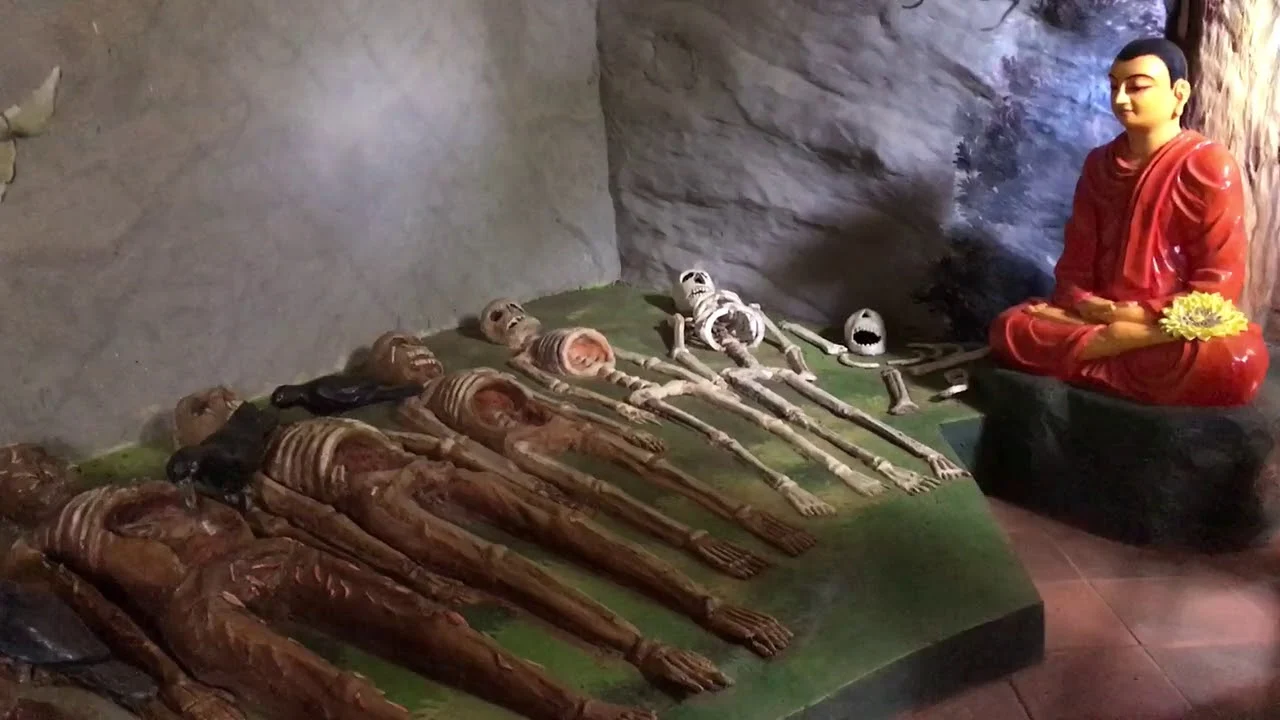CONTEMPLATION OF WHITE BONES – CEASED CRAVING
Bhikkhu Thich, HuyenChau
Craving (taṇhā) is a negative mental factor that strongly influences human thought and behavior. It commonly arises in response to attractive appearances, graceful features, pleasant physical contact, and the allure of veneration. One’s inner life cannot be liberated from worry and suffering, if it is constantly dominated by the increasing intensity of desire.
To transform this stream of unwholesome mental energy, one may practice
the Contemplation of White Bones(aṭṭhikasaññā), a method expounded by the great
Abhidharma master Vasubandhu in the Abhidharmakośa. This meditative practice
unfolds in three stages:
Stage 1: Initial Practice
Begin by focusing the mind on a specific bodily part—such as the big toe, the space between the eyebrows, or whichever part is easiest for concentration. Then,
using one’s power of imagination, analyze how that part of the body would
decompose after death: swelling, oozing pus, decaying, and eventually
disintegrating until only white bones remain.
Next, extend this contemplation to the entire body after death—imagining it fully
decayed and reduced to a skeleton of white bones. When this visualization
becomes master, expand it further by imagining all people around you as nothing
more than white skeletons. Continue extending the scope of contemplation to the
boundaries of the oceans, seeing everywhere as composed of white bones. Finally,
withdraw the visualization gradually until only one’s own skeleton remains clearly
in mind. At this point, the foundational practice of white-bone contemplation is complete.
Stage 2: Mastery Through Familiarization
Now, stabilize the mind at the back of the crown of the head. Contemplate the
gradual destruction of one’s own skeleton, from the big toe up to the skull, until only half of the skull remains. At this stage, the power of visualization and
analytical observation becomes unified and centered at the back of the head. This
marks the stage of mature and stabilized training.
Stage 3: Transcendental Application
Once familiarization is complete, move the awareness to the empty space just in
front of the midpoint between the eyebrows. From there, extend the contemplation
backward through the skull and visualize the ultimate disintegration—until nothing
remains. This stage of the Contemplation of White Bones is known as Transcendental Application (supramundane conceptual engagement).
Though this practice may not completely eliminate suffering, it suppresses and
weakens defilements (kilesa). The Contemplation of White Bones embodies the
essence of non-attachment (alobha) and serves as the foundation for detachment
and renunciation at all levels of meditative absorption (jhāna).
If one wishes to uproot both manifest and latent forms of desire and attain supreme
peace, this contemplation must not be neglected.

